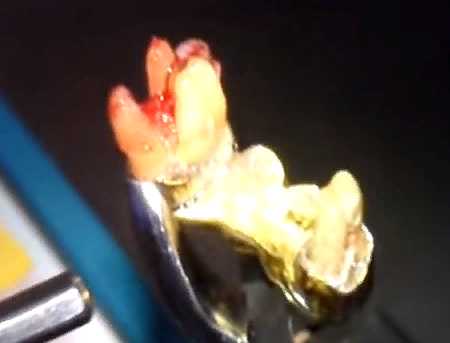When a patient hears from a dentist about a tooth cyst, he most often thinks that the tooth will have to be extracted. However, you should know that sometimes a tooth can be saved with treatment.
Tooth Cyst Facts
A dental cyst is an inflammatory mass at the root of a tooth. Inflammation is a process of the body resisting an infiltration.
During this “struggle” both the pathogens and the body’s own cells die. Thus, the body’s defense systems have two tasks: to defeat the infection and to remove dead cells and bodies from the center of inflammation. A third task is also implied (as the first two are solved): tissue regeneration and restoration of the damaged area.
When the body encounters difficulties in solving the second task, there is a risk of developing a cyst: the secretions produced by the inflammation cannot be excreted; a pathological chamber appears, which accumulates these secretions. Gradually, the walls of the chamber thicken, the size increases. This formation is called a cyst. A situation arises when the body itself retains the infectious and inflammatory focus, which, at the same time, grows.
Possible consequences (the most common):
- Risk of tooth loss arises.
- Bone loss. Bone tissue “retreats” before the enlarging cyst.
- Development or worsening of periodontitis.
- Risk of infection entering the bloodstream with subsequent infection of other tissues.
Causes of the Cyst
The most likely causes of cyst formation:
- As a result of traumatic injury to the tooth/root.
- As a complication of a disease associated with the tooth.
- As a complication of another (non-dental) disease (e.g., maxillary sinusitis).
Signs that You Have Tooth Cyst
Often the development of a cyst occurs unnoticed by the patient. In particular, this is one of the reasons why you should visit the dentist regularly: an experienced specialist will be able to recognize the pathology in its earliest stages, when the cyst may not be of any concern to the person. There are cases when a person goes to the clinic for treatment of caries, and during the diagnosis it is found that there is a cyst on another tooth.
If the cyst does make itself known, it can manifest itself in different ways. There are cases where the cyst gets some outflow of cavity contents, so a fistula is formed. The contents of the cyst get under the periosteum; there is a risk of flushing. A bump that forms on the gum is another possible indication of a cyst. A cyst may also manifest itself through pain (usually from physical pressure on the affected tooth).
What Does the Dentist Do?
In the early stages, conservative/therapeutic treatment is possible. In this case, the doctor creates access to the root canals and the cyst. Inflammation is neutralized, its source is eliminated, and the affected tissues are removed/cleansed.
For the protection and restoration of tissues special preparations are used. The root canals are sealed. In the future (over a period of time) regular visits will be required to monitor the condition of the roots.
During therapeutic treatment, dephosphoresis may be used: a technique in which the inflamed area is exposed to a weak electric current.
In cases where therapeutic treatment is not indicated, surgical methods will be used. The surgeries that usually take place are:
- Cystectomy. The doctor accesses the root and cyst by peeling off the gum and periosteum. The cyst and the cyst-affected area of the root are removed. In the area of the intervention the doctor puts preparations that promote healing and tissue repair. The operation wound is closed and stitches are applied.
- Hemisection. Such an operation can take place if a tooth with more than one root is affected. The basic principle is the same: the body of the cyst is removed, but one of the roots of the tooth (the affected root) may be removed along with the cyst.
Treat or Remove?
The answer is to treat the tooth. And if the cyst has progressed, it must be removed. That is, the cyst must be removed, not the tooth. However, if the situation is serious, and the cyst (as well as the affected tooth) must be protected from other tissues, you may need to remove the tooth. An important note: Without the patient’s consent, neither surgery to remove the cyst nor surgery to remove the tooth will be performed. Before making a final decision, consult different doctors (and different specialists), listen to their point of view.






